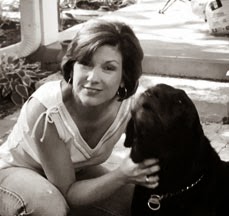Carol Berkin is the author of the new book Wondrous Beauty: The Life and Adventures of Elizabeth Patterson Bonaparte, which looks at the life of the American woman who married Napoleon's younger brother. Her other books include Civil War Wives and Revolutionary Mothers. She teaches at the Graduate Center of the City University of New York and taught at Baruch College for many years; she is Baruch Presidential Professor of History. Berkin lives in New York City and Guilford, Connecticut.
Q: Why did you decide to
write about Elizabeth Patterson Bonaparte?
A: Actually, I was having
dinner with a friend who makes historical documentaries and I mentioned I was
searching for a new book topic. I have just the subject for you, he said—and he
told me about Elizabeth Patterson Bonaparte. I did a little digging and
realized hers was the story I had to write.
It was a wise decision. The
story is fabulous, but more than that, it gave me the opportunity to show how
historians must explore the intersection between “private” lives and public and
political decision making.
And, it gave me the chance to
demonstrate how the American gender ideology of the era thwarted individuality
in women even as it touted it in men.
Q: You describe her as "an
American celebrity, perhaps the first of her era." What accounted for her
fame? Was it mostly due to her marriage to Napoleon's brother, or was that just
a part of it?
A: Of course, her marriage to
Jerome catapulted her into the limelight. Both the young Betsy and her new
husband loved being the center of attention. Washington society went wild over
her—both favorably and unfavorably. Newspapers carried accounts of what she
wore, where the couple went, what they said.
Later, her celebrity returned
because of the tragic tale of her betrayal by her husband. In the early 19th
century, the struggle between England and France meant that everything that
happened to Betsy had political and diplomatic repercussions.
Her terrible treatment by
Napoleon, England’s generosity to her, the romantic pursuit of her by English
noblemen, and then the pension Napoleon gave her—all of these shook the
American government and swayed public opinion vis a vis Napoleon and the
English.
Her celebrity thus endured.
When Betsy sued in French courts for her only child, Jerome’s son, to be
recognized as legitimate, when Jerome died, when her son died—newspapers around
the country retold the tale of her marriage and betrayal. I found accounts of
her early life in newspapers as far away from her home state of Maryland as
Oklahoma.
Q: Elizabeth Patterson
Bonaparte's difficult relationship with her father is one of the major themes
of the book. How would you describe the dynamic between the two of them?
A: This was the true tragedy
of her life. She and her father were temperamentally very similar—and of course
never realized it. He longed for her to let him protect her; she longed for him
to respect her decisions. He saw her as disobedient and scandalous; she saw him
as a hypocrite because of his infidelities and a tyrant to his children.
And yet…it was clear that the
central emotional connection in both their lives was with one another. They
never made peace with each other.
Q: What does her life say
about the role of women in that era, both in Europe and in the United States?
A: Betsy’s desire to be more
than just a wife and mother, her longing to be seen and appreciated as a smart,
interesting individual ran hard up against the gender ideology of early 19th
century America. That ideology—domesticity—confined women to the parlor and the
nursery. Betsy found this smothering.
France, on the other hand,
permitted elite women a public social role. Women ran salons where intellectual
and artistic men and women gathered, for example. This is what Betsy wanted for
herself. And, after Napoleon was exiled, she achieved it.
In her letters, she raged
against bourgeois American society, against its men who pursued nothing but
money, its women who led cloistered, confining lives. And, to a great degree,
she was correct. She sacrificed much to escape this world. Liberation had its
price.
Q: What are you working on
now?
A: I just turned in a new
manuscript to Simon and Schuster on how we got the bill of rights. It is titled
The Bill of Rights: Securing America’s Liberties.
Q: Anything else we should
know?
A: I just became a
grandmother for the first time. This is even more thrilling than seeing your
books in print!
--Interview with Deborah Kalb









































